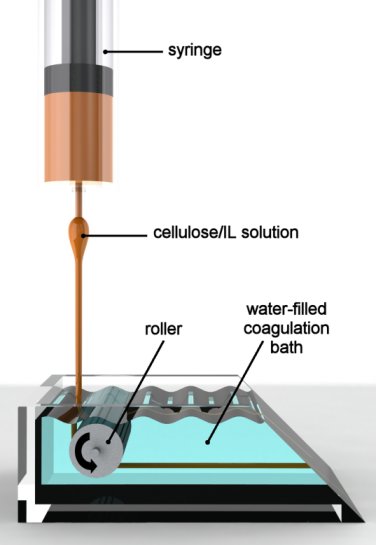Fiber
spinning is common in nature (e.g. spiders and silk worms) and is also
important industrially for the production of e.g. Kevlar, Nylon, Rayon,
etc. Formation of the highest modulus fibers requires a high degree of
orientation and alignment of the polymeric molecules that consititute
the fiber (proteins, polysaccharides, or synthetic polymers) along the
direction of the fiber axis, so they can crystallize with fewer
defects. As shown schematically in the figure below, orientation is
achieved in the dry-jet wet spinning process by subjecting the
fiber-forming fluid to strongly extensional flow, first by squeezing
the fluid through a nozzel (or spinneret) and then by stretching the
fluid in the air gap prior to coagulation of the fibre in a bath.

Schematic representation of the first part of the dry-jet wet spinning process. A concentrated solution of fiber-forming molecules is ejected from a syringe, showing die-swell at the exit, before entering a water-filled coagulation bath. The roller rotates with a velocity Vr greater than the exit velocity of fluid from the syringe vs, providing a draw ratio d = Vr/ Vs, which enhances the extensional stress on the thinning fluid in the air gap and helps to align molecules prior to coagulation. Subsequently, the coagulating filament passes around a second roller within the water bath before being taken up on a spool as a coagulated fibre.